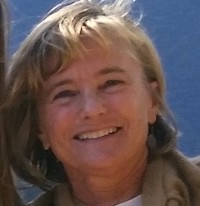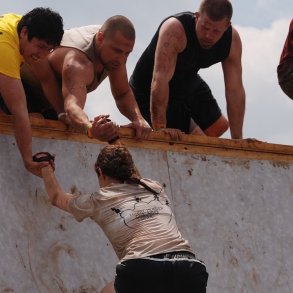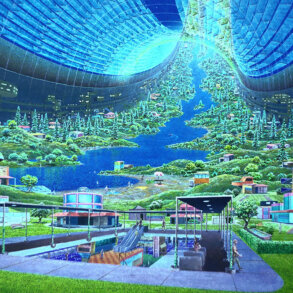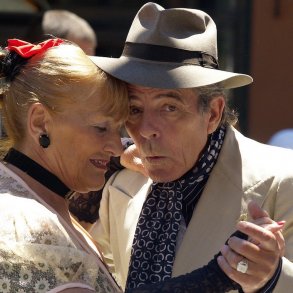By Betsy Sheppard for Enlivening Edge Magazine
“If we can be in the world in the fullness of our humanity, what are we capable of?” ~ Margaret Wheatley and Myron Kellner Rogers, a simpler way
Many organizations today, inspired by Frederic Laloux’s core concepts presented in Reinventing Organizations, aspire to bring more “wholeness” into the workplace. What does wholeness look like? How might we individually and collectively move with intention and attention in that direction?
One of the most difficult challenges in the work of transformation is helping people and organizations engage in regular reflective practice in a way that aligns individual and organizational development toward a shared vision.
Like an exercise program, we know doing inner work is good for us but how do we get started? How do we sustain the practice? A framework or organizing philosophy can act as scaffolding to facilitate progress and unify individual efforts around collective goals.
In this article, I provide a structure, a core process and a direction as the scaffolding to guide reflective practice and help your organization move toward “wholeness.” These components arise from modern thinking in depth psychology and developmental psychology as well as from ancient wisdom and spiritual practices; when examined together they reveal valuable patterns to help address the challenge.
Structure to guide the way
One recurring pattern is essential qualities or energies of the human experience as described in yogic practice as the seven chakras, in Buddhism as the ten worlds, and in Carl Jung’s work as archetypes. These different perspectives can be synthesized into one set of core elements that make us whole and fully human.
This simple framework is useful because it taps into inherent qualities we all possess as humans that can be intentionally activated. The following inherent human qualities, named as natural elements, are relevant to all areas of life, including the workplace.
- Water Element representing soulful qualities that help you connect with your deep inner self and remain true to who you are as you learn, change, and grow. Specific capacities include resilience, flexibility, intuition.
- Earth Element representing nurturing qualities that help you cultivate the best in yourself and others. Specific capacities include compassion, connection, loving kindness
- Fire Element representing power qualities that help you tackle tough challenges and persevere in the face of obstacles. Specific capacities include determination, commitment, discipline.
- Light Element representing joyful qualities that help us feel fully alive and appreciate everyday moments. Specific capacities include playfulness, presence, gratitude.
More and more organizations are regarding these aspects of our wholeness as relevant for better expressing the purpose of the organization in results, because they uplift everyone involved.
Unfortunately, today’s dominant culture over-emphasizes the power aspect at the expense of the other three areas, limiting potential for individuals and the organization. Intentional balance across all four elements of our human nature unleashes potential in everyone and all arenas of life.
A process to put into motion
In any transformation effort, the systemic change must include both structure and process. The four core elements provide a simple structure to guide individual and collective development in the direction of becoming more fully human. The core process or steps to follow come from the natural, adaptive learning cycle inherent in any living system. This learning cycle can be described as follows:
- Awareness: noticing what is and sensing a need to change
- Differentiation: deconstructing to understand nuances and obstacles to change
- Reintegration: taking action to incorporate changes into the system or body.
Reflective practice supports and enables this natural process. In the book Search Inside Yourself Chade Meng-Tan provides solid evidence to show how training your attention, increasing self-knowledge, and creating new mental habits leads to success, happiness (and even world peace).
He firmly believes that happiness is our default human state achieved by cultivating emotional intelligence and letting go of habitual reactions and limiting beliefs.
Direction in which to travel
You have a map of the territory (the elements) and you know the steps to take (the learning cycle). Where do you start, and which way do you go?
Developmental psychology provides the clues. The stages of adult development as defined by Wilber, Loevinger, Torbert, Kegan, Cook-Greuter and others[1] all follow a similar general pattern and direction from ego-centric (self, me) to ethno-centric (us) to world-centric (all of us).
So a good first step would be to begin at ego, and strengthen your relationship with yourself. Start to engage in the learning cycle to cultivate these qualities:
- self-determination (power element)
- self-compassion (nurturing element)
- self-acceptance (soul element)
- self-awareness (joy element).
Engage in reflective practice a little each day. Notice with awareness how you are now. To differentiate, inspect and dissect the emotions and beliefs that block change. To reintegrate, take simple actions to develop new habits.
Expand the Impact
The second step would be to expand from self to “us” by including others. As a transformation innovator, how can you help others embark on and sustain the journey of individual and collective transformation? Start with one group or team of people and take small, gentle steps together.
For thirty days, guide the group to notice when they feel:
- free to be themselves
- excited to be alive
- energized by their work
- tender and forgiving toward themselves.
Help them look for clues in the shadows about what to let go of, such as the fear of being wrong or the need to please and be perfect. Suggest simple happiness exercises such as seeing small moments of joy and beauty in each day, noticing what you are grateful for about yourself, or embracing your flaws as part of your unique character.
As people improve their self-relationship, it impacts daily interactions and relationships with others, including at work. It is easier to communicate from a heartfelt “I” perspective when you know yourself better and become more aware of your reactions, emotions, and triggers. The power within naturally expands to power between self and others, rather than power over others.
These subtle changes in relating to each other then start to accelerate and extend beyond the team to the organization, and ripple outward beyond the organization to the world around you. This expansion moves development in the direction of “all of us.”
The scaffolding presented here enables you and your team to begin exploring your inner worlds together and experience what wholeness feels like. As in the “flywheel effect”, popularized by Jim Collins in Good to Great, the initial turns of the wheel are the hardest, going against strong resistance. Once the flywheel is in motion, it gets easier and easier and the impact becomes greater.
The above methods are offered as suggestions to help you get started and move in the right direction. You can evolve the practice over time to suit specific organizational and individual needs. The important lesson is to start small with individual practice and gradually expand outward.
Going from Good to Great in these chaotic, complex conditions cannot happen with one technique, action, or initiative; it comes from a sustained commitment to transform yourself and in doing so, transform the organization, and maybe even the world.
[1] As mentioned in Laloux Reinventing Organizations pp. 14-35.
Featured Image used with permission. Image note: “For me, happiness is the joy we feel striving for our potential” Shawn Achor, Happiness Advantage.
 Betsy Sheppard is the Founder of EAS Ventures, an organization devoted to cultivating human potential. She is the creator of an innovative App that supports structured, guided reflective practice in the direction of becoming fully human. Her areas of expertise include systems analysis, process and organization design, developmental psychology, and experiential learning. Reach her via gmail.com, betsysheppard0916.
Betsy Sheppard is the Founder of EAS Ventures, an organization devoted to cultivating human potential. She is the creator of an innovative App that supports structured, guided reflective practice in the direction of becoming fully human. Her areas of expertise include systems analysis, process and organization design, developmental psychology, and experiential learning. Reach her via gmail.com, betsysheppard0916.




